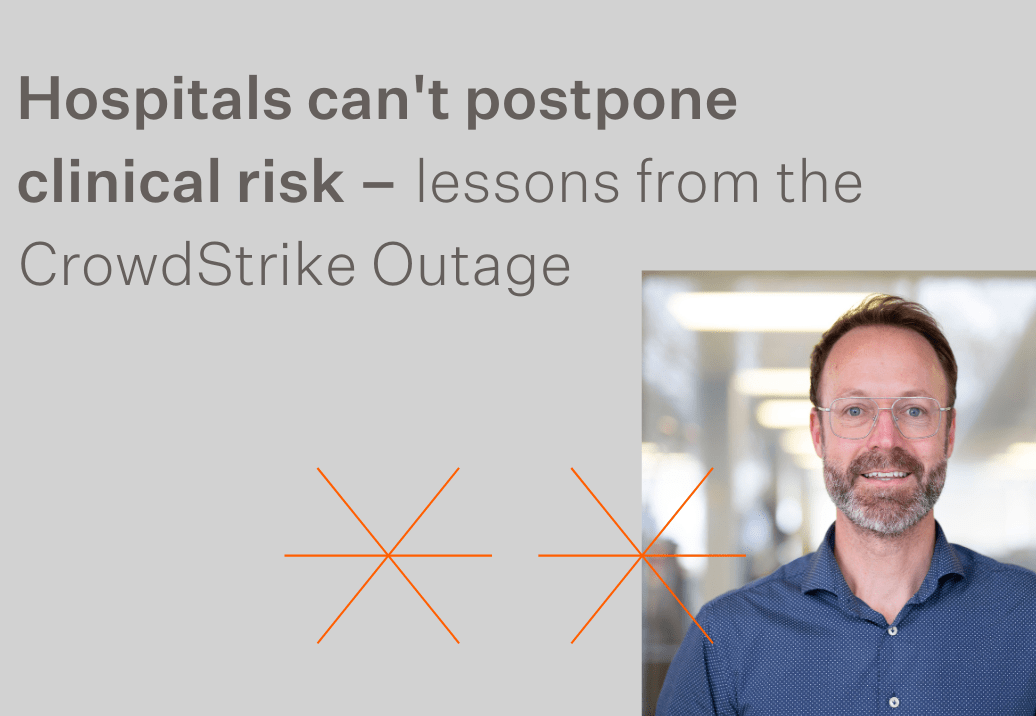It seems every technology vendor, venture-backed startup, and recent college grad working out of their parent’s house with a Mac and a dream has thrown the tag, “AI,” on their solution and is trying to break into healthcare. Saying there’s a lot of hype surrounding AI is an understatement.
But healthcare executives would be wrong to dismiss all AI as a passing fad, like Beanie Babies or Myspace or, worse, buying Beanie Babies on Myspace. Sitting on the sidelines and waiting for AI to mature will only bring regret — even those very fond of paper charts realize they should have moved more quickly into the digital age. And sound stewardship demands you not jump into the AI revolution with two feet — while technology stocks may gain value (if you’re lucky), tech itself gets cheaper, and better, as it gains adoption.
According to the American Medical Association, almost 90% of health system executives said digital and AI transformation is a top or high priority, yet 75% said they aren’t able to deliver on it. Here’s what you need to know to be able to deliver on this priority today:
3 steps for a successful and financially responsible technology strategy for healthcare executives.
Step 1 – Don’t confuse the ends with the means, and don’t get caught up in the hype.
Unless you have a “laptop strategy” or a “scalpel strategy,” you don’t need an “AI strategy.”
AI is a tool. It’s not the magic solution to all your workforce, efficiency, and quality issues. It’s not a solution at all. In fact, AI is not even a single technology. It is a whole field of different technologies that perform specific tasks normally requiring human intelligence or labor.
Ignore the hype and start at the beginning! Your strategy should start with the mission and goals of your organization. Next comes the technologies that can help you achieve these goals. Finally, it’s time to think about how AI fits into your broad technology-enabled organizational strategy.
If you start with the new technology and its use cases without focusing on the people, processes, and goals you want to achieve, you’ll end up with a tech-enabled mess.
It may be tempting to dive into some immediate AI use cases, but your next step is to be sure you’re set up for success today, tomorrow, and years to come.
Step 2 – Future-proof your broad technology platform to prepare for future use of AI
This is the most important immediate action and investment you can make.
Not only will new technologies and applications quickly arise, the entire healthcare delivery system is constantly changing. You need a platform that allows you the flexibility to change and grow, too.
Future-proof your technology to ensure you’ll be prepared to utilize the latest, greatest, and safest AI as it develops. This will also enhance your agility and adaptability and allow you to be innovative on your timeline rather than being stuck with a technology platform that requires costly improvements (or replacement) to effectively upgrade and implement new technologies, specifically AI.
Future-proofing makes good business sense. It maximizes tech ROI. And it’s the best “no regrets” decision you can make today, with payoffs that are both quick and long-lasting.
Now you can plan for some quick wins.
Step 3 – Pick a few practical and immediate benefits you want to achieve, invest there and achieve quick wins
Immediate wins can come from automating repetitive tasks (like billing and coding), summarizing clinical information to make it more accessible for clinicians and patients, and even personalization of outreach, scheduling, chatbot experiences, etc.
Start small and walk before you run. Focus on 2-3 areas that are most aligned to your priorities and goals. Gain the quick win to keep your stakeholders engaged in the big picture while keeping your organization focused on its most pressing strategic priorities.
This forms a strong strategic approach for how technology can help you meet your priorities. Futureproofing your data infrastructure will provide a strong and stable foundation, and allow you to invest in a couple of quick AI wins.
Turns out you can have your AI cake and eat it too.



